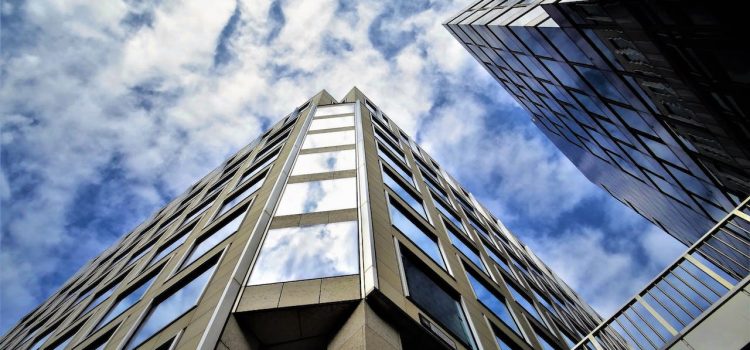
Introduction
In the realm of commercial real estate, lease contracts are both an art and a science. These binding agreements are the very core of the landlord-tenant relationship, where the fine balance between artful negotiation and scientific precision is crucial. In this comprehensive guide, we will embark on a journey into the world of commercial real estate contracts. From the art of negotiation to the science of deciphering key clauses and the effective management of leases, you will gain the expertise needed to master this intricate domain.
The Significance of Commercial Real Estate Contracts
Before we delve into the details, it’s essential to grasp the significance of commercial real estate contracts:
Commercial Real Estate Contracts: These legally binding documents outline the terms and conditions under which a commercial property is leased. They serve as the cornerstone of the relationship between landlords and tenants, specifying rights, responsibilities, and financial obligations.
1. The Art of Negotiation
Negotiating a commercial lease is an art form that requires a delicate touch. Here’s how to excel in this art:
Understanding Tenant Needs
For both landlords and tenants, understanding the business’s unique needs is paramount. This includes identifying the type of space required, the ideal location, and essential amenities.
Negotiating Lease Terms
Negotiation is where lease contracts come to life. To master this art:
- Stay Informed: Begin by gaining a comprehensive understanding of market conditions, including current rental rates and vacancy rates.
- Choose the Right Lease Term: Determine the lease term that aligns with your business strategy, whether it’s a short-term lease for flexibility or a long-term lease for stability.
- Negotiate Rent Structure: Delve into the rent structure, encompassing base rent, rent escalations, abatements, and incentives. This negotiation significantly influences financial commitments.
- Tenant Improvements Agreement: Discuss tenant improvement allowances and establish who will manage improvements or alterations to the space, especially vital for businesses requiring customization.
- Assignment and Subletting Rights: Clarify the rights and restrictions related to assignment and subletting, allowing for future adaptability in business operations.

Image by: https://www.metrocommercial.com/
2. The Science of Key Lease Clauses
Commercial lease contracts are filled with intricate clauses that require careful analysis. Here’s how to navigate this scientific aspect:
Rent and Escalations
Understanding how rent is calculated and when escalations occur is of utmost importance. It’s critical to discern whether the lease is net or gross, as this significantly impacts the tenant’s financial commitments.
Common Area Maintenance (CAM)
For properties with shared common areas, CAM charges are relevant. Understanding the scope and calculation of these charges helps avoid unexpected financial burdens.
Use Clauses
Use clauses dictate the permissible business activities within the leased space. A profound understanding of these clauses is vital to prevent conflicts or limitations on business operations.
Repairs and Maintenance
Lease terms specify responsibilities for property repairs and maintenance. Tenants must understand their obligations and the landlord’s responsibilities, if any, to avoid unexpected costs.
Options to Renew
Many commercial leases include options to renew at the end of the initial lease term. Familiarizing yourself with these clauses ensures that you can extend your lease under favorable conditions when the time comes.
Comparative Table: Key Lease Clauses
To provide a clear overview, here’s a comparative table summarizing the key clauses in commercial real estate lease contracts:
| Lease Clause | Description | Importance |
|---|---|---|
| Rent and Escalations | Specifies rent calculation and escalations. | Directly affects tenant’s financial commitments. |
| Common Area Maintenance | Addresses shared common area expenses. | Impacts additional costs for tenants in certain properties. |
| Use Clauses | Defines permissible business activities in the leased space. | Critical for ensuring compliance with lease terms. |
| Repairs and Maintenance | Outlines responsibilities for property upkeep. | Affects maintenance costs and the condition of the leased space. |
| Options to Renew | Provides conditions for lease renewal. | Influences the tenant’s ability to extend the lease on favorable terms. |
3. Best Practices for Lease Management
After successfully negotiating and signing a lease contract, effective lease management is essential for a harmonious tenant-landlord relationship and the seamless operation of your business:
Compliance with Lease Terms
Compliance is non-negotiable. This includes timely rent payments and fulfilling maintenance responsibilities. Meeting your obligations ensures successful lease management.
Meticulous Record-Keeping
Maintain comprehensive records of all communications and transactions related to the lease. These records serve as a valuable resource in case of disputes or misunderstandings.
Open and Transparent Communication
Open and transparent communication with your landlord or tenant is key to resolving issues, addressing questions, and preventing conflicts from escalating.
Utilize Lease Management Software
Consider using lease management software to stay organized and informed about essential dates and obligations. These tools help manage lease payments, renewal dates, and maintenance responsibilities efficiently.
Conclusion
Leasing commercial real estate is a blend of artful negotiation and scientific analysis. By mastering the intricacies of crafting lease contracts, deciphering key clauses, and implementing effective lease management, you can navigate the complex world of commercial real estate with confidence. Lease contracts are not just documents; they are the keys to a successful tenant-landlord relationship and thriving business operations. Whether you’re a seasoned professional or new to the game, the art and science of commercial real estate contracts open doors to growth and prosperity in the commercial real estate industry.










